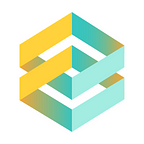Powering the Energy Sector With IoT Data | Part 3: Consumption
It is clear that if IoT solutions are implemented across power generating assets or even network lines, the resulting data can empower various applications and improvements for the generation phase and the transmission & distribution phase of the energy supply process.
In the third and final part in our series, we will focus on understanding the applications that IoT brings to the end consumer, how IoT is transforming energy consumption and how utility companies can use that data to better serve their customers.
Transforming Energy Consumption
Energy is a crucial resource for both individual consumers and businesses alike. From power stations, electricity travels vast distances along transmission lines, to substation in cities and towns then finally through distribution lines before reaching residential homes or commercial and residential buildings for consumption.
World energy consumption is simply the total amount of energy produced and consumed by humans. The pattern of energy consumption has undergone considerable change overtime, with increases in demand and change in use of energy sources. Due to the projected growth in world population, the demand is expected to more than double in 2050. The impact of this rise affects the environment and global economy which makes it an important topic for discussion.
In an era where technology drives everything, the power of IoT to transform the way energy is consumed is not unimaginable.
Smart energy management
Smart meters, which are being implemented around the world, are one of the most important devices used in the smart grid — it acts as the interface between the energy consumer and The Grid.
By 2026, it is estimated that the smart meter will reach a whopping 198.53 million units. In the UK, gas and electricity suppliers are required to take all reasonable steps to roll out smart meters to all of their domestic and small business customers by the end of June 2021.
Consumer attitudes toward energy consumption are changing — they are becoming more energy conscious and are looking for ways to better manage their usage. Smart meters are the next generation of electricity meters which allow users to track their energy consumption by providing data on the amount of usage, empowering them to make decisions to become energy efficient whilst potentially saving on costs. IoT platforms are the enabling technology that allows this data to be effectively used — from data collection and processing to analysis and visualisation. Such a platform needs to be accessible, scalable, have good analytical capabilities and, most importantly, ensure the privacy and security of any sensitive customer data.
New pricing models
The availability of smart meter data makes the development of more economical and flexible pricing models possible. Dynamic pricing concept is a pricing strategy in which businesses set highly flexible prices for end-consumers based on current market demands for the product or service. Many companies are taking advantage of IoT to transform the way their products and services are priced and move towards dynamic pricing models. Energy companies-and their consumers- can realise many benefits from this model.
“Peak demand” periods occur when the demand for electricity is at its greatest. High usage puts additional stress on the utility company’s capacity to generate electricity, and leads to higher prices. Dynamic pricing can help to shift the demand from peak to off-peak, by incestivising consumers with lower rates for using energy during off-peak periods.
By being exposed to time-varying electricity prices that reflect the value and cost of electricity in different time periods, consumers can make more informed decisions in response to market signals. With access to better data regarding periods and patterns in consumption, utility companies can also save costs as they can alleviate some of the added equipment and production costs that accompany peak production.
Informed Billing
The traditional method of billing consumers consists of rough estimations and requires manual meter readings. By Integrating consumption data with billing processes, consumers can receive more accurate bills and the need for call-outs for readings is reduced.
Based on past consumption patterns, companies can also offer value added services such as a prediction for the cost of future bills or even insights into how they can change their habits to decrease energy consumption and reduce costs.
Conclusion
Understanding the levels of energy consumption provides a greater level of flexibility to both customers and businesses. Consumers can play a more active role in taking control of their consumption levels and become more conscious consumers whilst watching the pennies. It also enables businesses to better serve their customers through flexible pricing models and greater insight into energy patterns.
With the ability to collect increasing amounts of data thanks to IoT, and partnered with the right enabling platform for creating new applications, the energy industry has a chance to effectively address many of the new challenges it faces.
